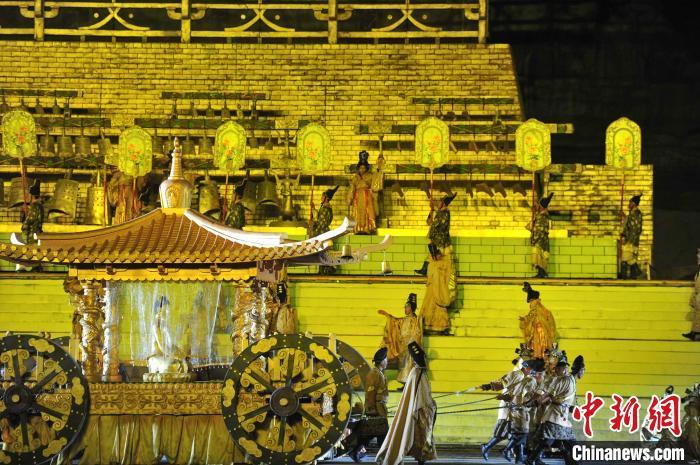Tibet Watch: exploring ways to release Tibetan cultural values

On the stage of the large-scale epic play, the magnificent music, melodious singing, free and easy folk dances and attracting stories of ups and downs are going on…
Off the stage, audiences are immersed in the performance.
Since its premiere in 2013, the large-scale epic play Princess Wencheng has been performed for more than 1,600 times. By now, the theater and its supporting projects have received more than 4 million visitors and paid more than 400 million yuan as salaries to local people. With the largest scale and its theater located at the highest altitude in China, the live-action drama Princess Wencheng not only shows the unique multi-ethnic culture and art of Tibet Autonomous Region to audiences incisively and vividly, but also establishes its brand position in China’s cultural tourism and performing arts market through continuous industrialization operation. It is also one of the excellent representatives of the development of Tibetan cultural industry.
Tibet’s cultural resources not only have a long history, but also are rich and colorful. In the long course of historical development, the snowy plateau has given birth to a long, rich history and ancient civilization. The ancestors living on the plateau have also created a splendid and profound ethnic culture. In recent years, the Tibet Autonomous Region has seized the opportunities brought by "culture plus", made full use of its own advantages, transformed its rich cultural resources into distinctive cultural industries and products, and fully released the commercial value and power of culture. It is reported that in 2022, the output value of Tibet’s cultural industry reached 6.329 billion yuan, with more than 8,000 cultural enterprises employing more than 70,000 people. Cultural industry has become one of the pillar industries in the Tibet Autonomous Region.
During the Tibetan New Year, the Tibet Museum carried out a variety of colorful activities in accordance with local customs, attracting lots of tourists and local citizens. In the small theater of Shanghai Wanping Theatre, the Tibetan opera Turandot produced by the Tibetan Opera Troupe of the Tibet Autonomous Region, was warmly received by the audience. In the Barkhor Shopping Mall, various kinds of cultural and creative products such as cutlery, mobile phone cases, throw pillows, pens, bookmarks, notebooks, rulers, mouse pads, beauty makeups, postcards and so on with Tibetan patterns are very popular with tourists at home and abroad. In Tashi Chorten Community of Lhoka City, home-stay tourism is integrated with the ancient Tibetan opera culture, which is a kind of China’s national intangible cultural heritages, exploring a new development path of cultural inheritance to promote economy, and economic development further to help rural revitalization... Culture plus science and technology, culture plus commerce, culture plus tourism, and culture plus N. Facts have proved that, under the premise of conforming to the law of market economy, the richer, deeper and wider the "culture plus", the higher the value released by culture, and the stronger, more developed and more prosperous the economy.
"The output value of the cultural industry will increase by more than 15 percent," which is the priority work plan of the Tibet Autonomous Region in 2023. By taking advantage of its unique and rich cultural resources, increasing integration with other industries and further exploring ways to release its cultural values, Tibet Autonomous Region is taking action to truly make the cultural industry a booster for the sustainable economic development of Tibet.
